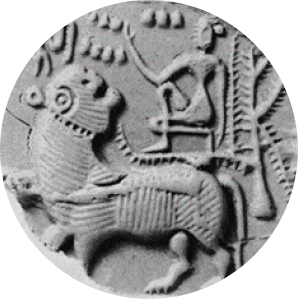I found a Swiss couple today willing to split the cost of a guided nature walk in the forest. This was very enjoyable and interesting. After donning special anti-leech socks, we went in, accompanied by Ajesh, from the Manan tribe.


All of the forest guides are recruited from the tribal peoples who have traditionally lived in the area of the park area, as they know the terrain and the wildlife intimately. He was able to give the English or Latin names for everything we asked about. Wild animals are shy, so you don’t often see them. Now the rains have started, all the wild animals move away from the area we were in towards the lake. Elephants need to consume about 350 kilograms of vegetation each per day, so they go where the food is. There had been a tiger sighting a month ago in the area we were in. There are leopards and rarely, black panthers. The tiger may have been coming for the gaur, a kind of bison that is the largest in Asia, weighing up to 1500 kg.

Or maybe he was coming for deer, of which there are three kinds in the park, sambar deer, barking deer and mouse deer. The latter is a tiny creature, among the smallest of the deer family.
We saw frogs and toads (which disguise themselves as leaves), and lots of Nilgiri languirs – a large ape with a long tail, a black face, and a grey beard, as well as frogs and toads, which cleverly disguise themselves as leaves.


The park is full of interesting trees, many of them quite ancient. Bamboo (which is a grass, rather than a tree. Among fruits there are mangoes, jackfruit, and a fruit that resembles a kind of sour grape. There are 20 species of figs, including one called the strangler fig, which has an interesting life story. Birds eat the fruit, leading to the seeds being dropped into trees. During the rainy season, the seeds sprout roots high up in the tree, in any hollow with moisture they can find. These are aerial roots, that then surround the tree.

Years later they spread down into the ground. For a long time the fig will live in intimate embrace with its host tree, till starving it of carbon dioxide and eventually killing it – a process that can take hundreds of years.

Another fig is a spiny but hard creeper, thicker than one’s arm, that you can see shooting upwards to impossible heights.


The largest tree that we saw was the tetrameles – a specimen that was at least several hundred years old. It secures itself with flying buttresses that look like they have been constructed out of concrete, and the girth of its base is simply enormous. Apparently there’s a famous one at Angkor Wat, but the one we saw was in its league.


There are also lots of sandal wood trees, which need to be guarded night and day – dozens of rangers are scattered through the park. A kilo of its wood, said our guide, can fetch 20,000 rupees. Other valuable trees are the rudraksha, with its brain-like seeds and lots of huge old teak trees. Our guide says that there is no problem of deforestation in this area, and the park is well guarded against any kind of poaching (thanks to the budget from our entrance fees). However, climate change is still a problem. In his childhood Ajesh says that he remembers cool winters, and that the streams and brooks would flow with water the whole year, rather than just a few weeks, as is the case today. Tourism and strict government control are mixed blessings; providing organized work for the tribal people through the park foundation; obviating informal guiding of tourists, and raising the prices of basic goods.
Ajesh said that in a high season, he would do the walk we did up to three times a day, but the demand is mostly from foreign tourists. Indian tourists are lazy – they mostly like jeep tours or boat trips. When families come they immediately expect to see wild animals, as if the 350 square kilometer park was just a large zoo. But he said that in recent years there had been a slight change and Indian tourists were beginning to hit some of the trails in the park.
When we came out of the park we pulled off those anti-leech socks that had protected us well, though in the process a couple of leeches still managed to hitch a ride on my exposed skin. You don’t feel any kind of bite, and the leeches are not harmful, but they suck out copious amounts of blood. Afterwards while I was enjoying breakfast in a nearby cafe, one of them was making a meal of me – I looked down to find my foot bloodied as if after a serious injury.
